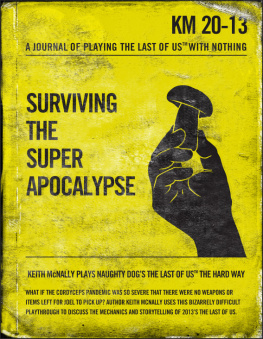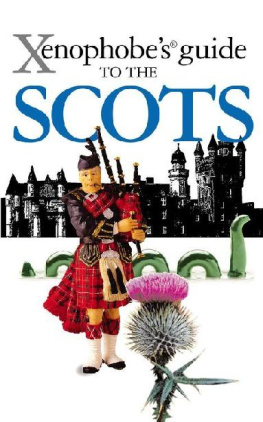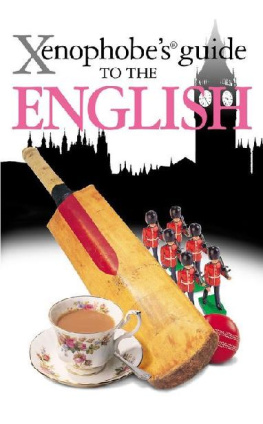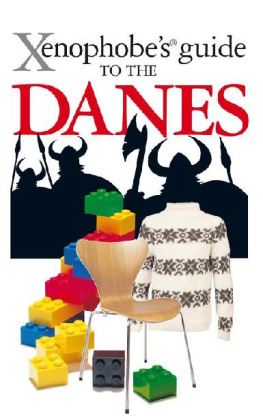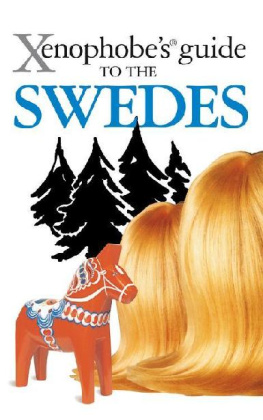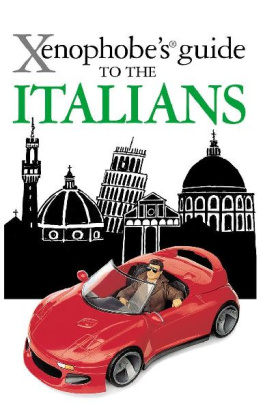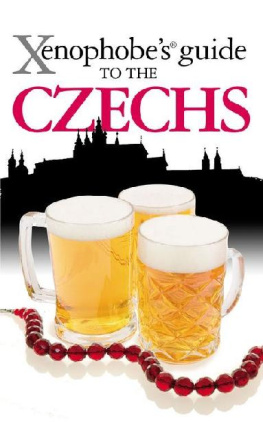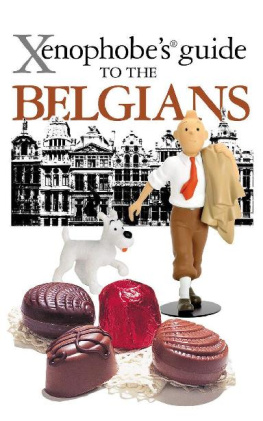Frank McNally - The Xenophobes Guide to the Irish
Here you can read online Frank McNally - The Xenophobes Guide to the Irish full text of the book (entire story) in english for free. Download pdf and epub, get meaning, cover and reviews about this ebook. City: London, year: 2013, publisher: Xenophobes guides;Oval Projects, genre: Art. Description of the work, (preface) as well as reviews are available. Best literature library LitArk.com created for fans of good reading and offers a wide selection of genres:
Romance novel
Science fiction
Adventure
Detective
Science
History
Home and family
Prose
Art
Politics
Computer
Non-fiction
Religion
Business
Children
Humor
Choose a favorite category and find really read worthwhile books. Enjoy immersion in the world of imagination, feel the emotions of the characters or learn something new for yourself, make an fascinating discovery.
- Book:The Xenophobes Guide to the Irish
- Author:
- Publisher:Xenophobes guides;Oval Projects
- Genre:
- Year:2013
- City:London
- Rating:4 / 5
- Favourites:Add to favourites
- Your mark:
- 80
- 1
- 2
- 3
- 4
- 5
The Xenophobes Guide to the Irish: summary, description and annotation
We offer to read an annotation, description, summary or preface (depends on what the author of the book "The Xenophobes Guide to the Irish" wrote himself). If you haven't found the necessary information about the book — write in the comments, we will try to find it.
The Xenophobes Guide to the Irish — read online for free the complete book (whole text) full work
Below is the text of the book, divided by pages. System saving the place of the last page read, allows you to conveniently read the book "The Xenophobes Guide to the Irish" online for free, without having to search again every time where you left off. Put a bookmark, and you can go to the page where you finished reading at any time.
Font size:
Interval:
Bookmark:


The number of Irish in the Republic of Ireland is 4 million, of which 1.3 million live in greater Dublin which is almost as many as the number of people who live in Northern Ireland. The combined population is thus around 5.5 million, compared with 3 million Welsh, 5 million Scots, 21 million Aussies, 52 million English and 307 million Americans.
The Republic of Ireland is nearly five times the size of Northern Ireland, but could fit into Florida twice. However, Northern Ireland and the Republic of Ireland taken together are a bit larger than Scotland.
There is a country called Ireland and a state called Ireland, and these are not the same thing. The country called Ireland includes Northern Ireland whereas the state called Ireland once claimed to include it, and now merely aspires to include it, eventually. For the moment, a majority of Northern Irelands population prefers the status quo (union with Great Britain, that is, not the 1970s rock band).
You may know Ireland as The Republic of Ireland, but this is only the working title.
You may know Ireland as The Republic of Ireland, but this is only a working title. The name of the state is Ireland, or in the Irish language Eire. For obvious reasons, the pro-British majority of Northern Ireland dislikes using the term Ireland to refer to the Republic. So although they have no enthusiasm for the Irish language, they often use the term Eire in English. This is considered an insult by people in the Republic, and is intended as such by Northern Ireland unionists, although both sides would have a hard job to explain why. English people sometimes use Eire without intended insult, which is OK because they dont know any better.
Many people in the Republic dont like using the term Northern Ireland, because the capital letters make it look too permanent.
Many people in the Republic dont like using the term Northern Ireland, because the capital letters make it look too permanent . Depending on how nationalistic they are, they prefer to call it the occupied six counties (extreme nationalist), the wee six (extreme nationalist with folksy sense of humour), the north of Ireland (moderate nationalist), or just the North, complete with capital N (liberal, sophisticated, hardly nationalist at all, just making a point). Pro-British northerners also sometimes use the province-name Ulster for Northern Ireland. But Northern Ireland contains only two-thirds of Ulster the rest is in the Republic, and people there dont like the U-name being misappropriated.
The country called Ireland is a diplomatic minefield for the unwary.
In short, the country called Ireland is a diplomatic minefield for the unwary. The safest thing is to refer informally to the north and the south. If you speak fast enough, no-one will able to tell whether youre using capital letters. Just remember that the most northerly part of the south Donegal is further north than anywhere in the North. Otherwise, the already high risk of getting lost in Ireland (see Road Signs) will be increased unnecessarily.
The Republic of Ireland and Northern Ireland are divided by a line known simply as the Border. This may be conspicuous on maps and even in books and newspapers, where it is often given a capital B, but it is usually less conspicuous on the ground. You can cross it repeatedly without even noticing (a claim made by the British army when it was caught on the wrong side).
The Border is marked by nothing more than a stream or bridge. But the line often passes through individual farms, farmyards, and houses.
Typically, the Border is marked by nothing more than a stream or bridge. But the line often passes through individual farms, farmyards, and houses. Indeed, thanks to the lucrative fuel-excise differentials between North and South, it even sometimes passes through large diesel tanks, owned by smugglers.
Road signs are usually a reliable indication that you have changed jurisdictions. In the South, direction signs appear if they appear at all in both English and Irish; whereas in the North, theyre in English only. Post-boxes provide clues too. As in other parts of the U.K., the North has the distinctive red Victorian post-box. The Republic also has the distinctive red Victorian post-box, except that, after independence, it was painted green.
Perhaps the most reliable indicators that you have crossed the Border are flags. Northern Irelands rival communities like to display flags and emblems to demonstrate their respective loyalties, and the areas immediately north of the Border are mostly nationalist . So when youre driving northwards and suddenly, everywhere you look, you see the flag of the Republic, you can take it as a certainty youre no longer in it.
Irish history is a long series of invasions, with one notable blip: in a cruel irony, the Romans decided Ireland was too wet to bother with.
Irish history is a long series of invasions, with one notable blip: in a cruel irony, the Romans whose genius for plumbing could have been useful decided Ireland was too wet to bother with. Few other marauding armies passed up the opportunity, however , so it was no great surprise when the Normans arrived from Britain in 1169, and launched the Eight Hundred Years of Oppression.
Once ensconced, they ignored repeated hints to leave. But as had happened with all previous invaders, the Normans (or the Old English, as they became known) were soon assimilated, becoming, in a famous phrase, more Irish than the Irish themselves. This development was regarded with concern back in England, where the New English had become more Norman than the Normans themselves.
The English planted new settlers who were more water-resistant than the Normans and less vulnerable to the effects of Celtic mist.
Reconquering Ireland, they imposed Penal Laws which banned a number of popular activities, e.g., being Irish. They also planted new settlers who were more water-resistant than the Normans and less vulnerable to the effects of Celtic mist. The settlers who were introduced to the North of Ireland in the 17th century were assimilation-proof partly because of religion. Whereas the Irish and the Old English remained Roman Catholic after the Reformation, these newcomers were Protestants of two main Scottish types Staunch and Fierce. Britains wars of religion came to a head on Irish soil in the battles of the Boyne (1690) and Aughrim (1691), when God lined out for both sides, but apparently fought a bit harder for the Protestants.
By Irish standards, the 18th century was peaceful with only one attempted revolution at a cost of 30,000 or so lives. An indirect cause of this rebellion in 1798 was the Act of Union which made Ireland and Britain a single parliamentary unit. During the 19th century, famine and mass emigration reduced the population of Ireland by half. For those left alive the campaign for Home Rule took on a new urgency.
In 1916 militant republicans had another go. Unlike all previous uprisings which were marked by unrealistic optimism, the insurgents this time shrewdly calculated they would lose. They even devised a cunning revolutionary concept known as the triumph of failure. The plan was a huge success when the British not only put down the rebellion but shot the leaders, thereby alienating public opinion and swinging it behind the rebels. Independence followed for 26 of Irelands 32 counties.
Font size:
Interval:
Bookmark:
Similar books «The Xenophobes Guide to the Irish»
Look at similar books to The Xenophobes Guide to the Irish. We have selected literature similar in name and meaning in the hope of providing readers with more options to find new, interesting, not yet read works.
Discussion, reviews of the book The Xenophobes Guide to the Irish and just readers' own opinions. Leave your comments, write what you think about the work, its meaning or the main characters. Specify what exactly you liked and what you didn't like, and why you think so.


